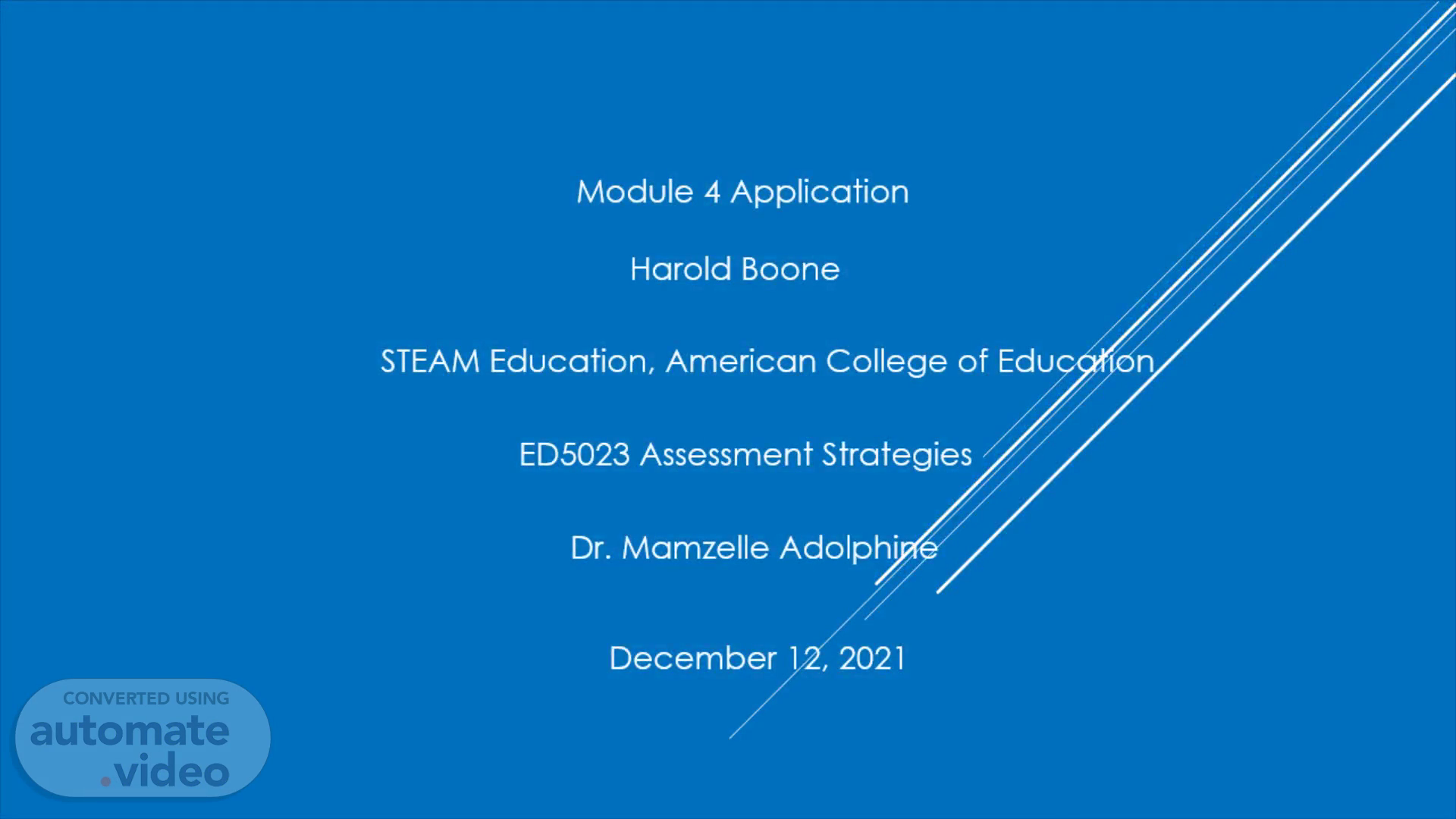
Learner Centered Assessment
Scene 1 (0s)
Module 4 Application Harold Boone STEAM Education, American College of Education ED5023 Assessment Strategies Dr. Mamzelle Adolphine December 12, 2021.
Scene 2 (17s)
abstract. Learner Centered Assessments Allows students to become active participants with a conscious awareness of the most effective teaching strategy designed to cater specifically to their unique learning style. It is empowering students to take an active role in building a bridge that they can travel that will lead to their educational success. Developing students becoming architects and designers of the implementation for the curriculum versus being passive and uninspired while receiving uninitiated instructions. Providing teachers with the necessary tool to be better equipped to facilitate learning techniques for students of every learning style..
Scene 3 (5m 17s)
OBJECTIVES :. A picture containing table Description automatically generated.
Scene 4 (10m 17s)
Diagram Description automatically generated.
Scene 5 (10m 24s)
Rolls of blueprints. Plan: Students will be given a written essay exercise. The essay must include information about what is engineering? What do engineers do? How do engineers help solve problems? What is the engineering design process? The essay will be written from a subjective point of view. They will state their personal opinions regarding each standard in the essay questions. Criteria: The students will follow a rubric as a guide for a standard to writing the essay. The rubric will have a different color for each separate criterion in the essay standard. The students will color and underline key words in rubric. The students will self-assess their drafts using the rubric as a format. Pilot group: 4 Engineering students in the 11th grade attending the Columbus Downtown High Schools Engineering Technology Design Techniques course (ET-145095). Prediction: The students will learn how to self-assess and will build confidence. They will begin to learn from their mistakes and apply self-adjusted corrections. Cycle: Students will work on he project at school during the class period. Data: The data will be collected at the duration of the assignment and assessed according to the rubric standard..
Scene 6 (11m 13s)
Students will be able to self-assess and adjust using color pencils..
Scene 7 (12m 16s)
A picture containing text, person, book, shelf Description automatically generated.
Scene 8 (12m 31s)
ACT: If it is determined that the intended objective target has not been acquired intervention will be implemented by adjusting the Learner-Centered Assessment to include Student Peer Review..
Scene 9 (17m 25s)
A picture containing text person indoor desk Description automatically generated.
Scene 10 (18m 4s)
Myers, C. B., & Myers, S. M. (2015). The use of learner-centered assessment practices in the United States: the influence of individual and institutional contexts. Studies in Higher Education , 40 (10), 1904–1918. https://doi.org/10.1080/03075079.2014.914164 Webber , K. (2012). The Use of Learner-Centered Assessment in US Colleges and Universities. Research in Higher Education , 53 (2), 201–228. https://doi-org.webproxy3.columbuslibrary.org/10.1007/s11162-011-9245-0 o.